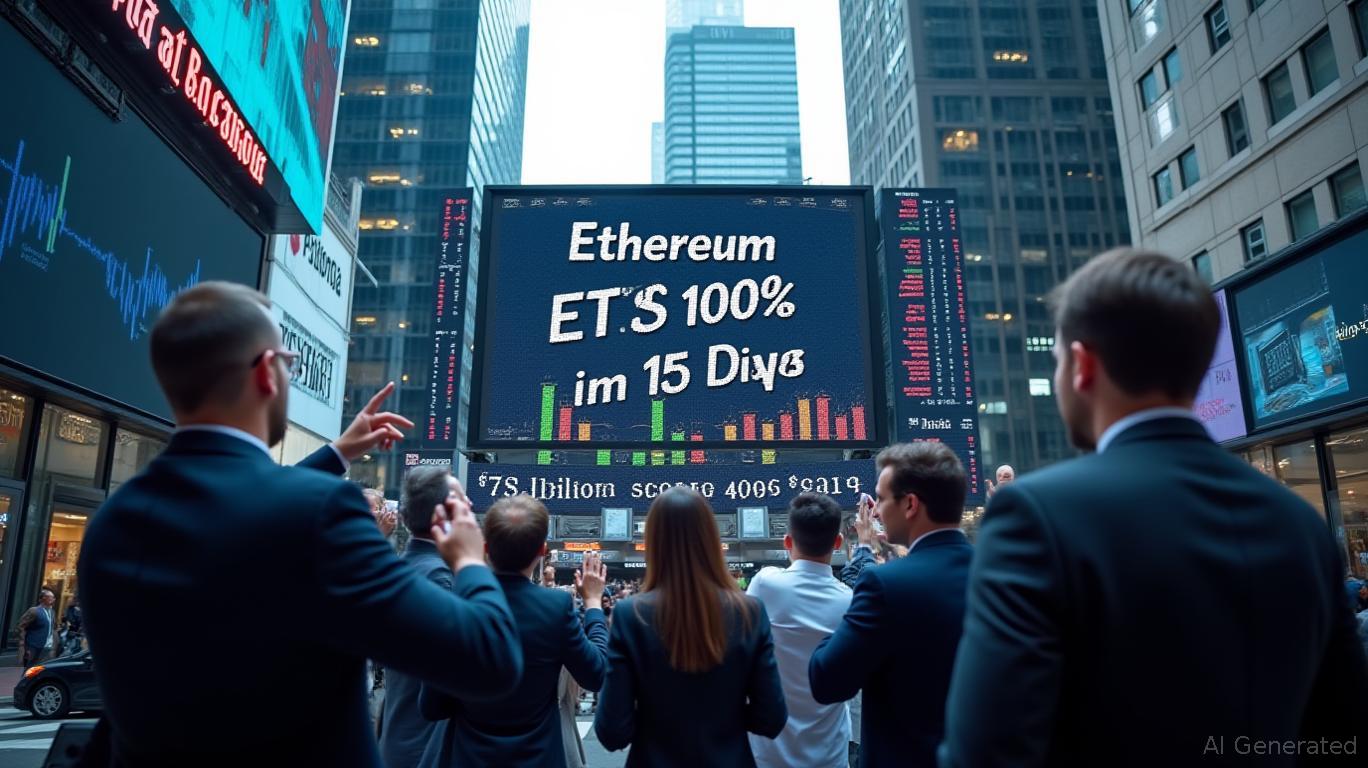Ethereum ETFs Surge 100% in 15 Days to $4.01 Billion
U.S.-listed spot
ETFs have reached a significant milestone, accumulating $4.01 billion in cumulative net inflows. This surge is particularly notable as $1 billion of this amount was garnered in just 15 trading days, marking a rapid acceleration compared to the first 10 months of the ETFs' existence. This trend underscores the growing investor confidence in Ethereum as a core portfolio holding.Leading this influx is BlackRock’s iShares Ethereum Trust (ETHA), which has seen $5.3 billion in gross inflows since its launch. Following closely are Fidelity’s FETH with $1.65 billion and Bitwise’s
with $346 million. These ETFs are collectively attracting substantial capital, driving Ethereum's market presence.While new ETFs continue to attract inflows, Grayscale’s legacy product
has experienced $4.28 billion in redemptions since its conversion. However, this outflow has slowed in the past two weeks, allowing overall market inflows to rise. This shift suggests a changing market dynamic, with investors increasingly favoring newer, more cost-effective ETF options.On June 11,
alone brought in over $160 million, and five other days between late May and late June saw net inflows exceeding $100 million. This pattern reflects strong buy-side demand, particularly from institutional players who had previously been hesitant due to high fees and regulatory uncertainty.The success of these ETFs can be attributed to several factors. One key driver is the fee advantage. ETHA and FETH both have a 0.25% management fee, significantly lower than Grayscale’s 2.5% ETHE. This fee difference is attracting the attention of financial advisors and fund allocators, especially those managing multi-asset portfolios for clients.
A report noted that the June surge was also influenced by two major factors: the ETH/BTC rebound and new IRS guidance on how staking income should be treated in grantor-trust ETF structures. This regulatory clarity has removed a significant barrier for advisors and institutions, making ETH-based ETFs more appealing as long-term investments.
Further confirmation of institutional interest is expected through the U.S. SEC’s 13F filings in mid-July. These filings will reveal whether institutional managers have increased their Ethereum ETF exposure since Q1. As of March 31, institutional ownership was less than 30% of total ETF assets, indicating that this number is likely to rise as Ethereum becomes a more mainstream portfolio holding.
The recent surge in spot Ethereum ETFs indicates that investors are becoming more sophisticated and willing to take on risk with digital assets. Ethereum's bounce, combined with low fees and institutional clarity, is transforming it from a niche altcoin into a legitimate investment product for wealth managers. While volatility remains a constant in the crypto market, the steady inflows and slowing redemptions suggest a structural shift in investor sentiment.
The ongoing influx of capital into spot Ethereum ETFs is no longer a theoretical concept. Clearer regulatory guidance, competitive fees, and broader macro interest are currently driving Ethereum's growth. As the market awaits 13F filings and monitors ETF flows, all indicators point to Ethereum expanding beyond its traditional investor base. As Ethereum gains traction and asset managers become more comfortable, spot Ethereum ETFs may become as common in portfolios as equities and bonds.


Comments
No comments yet